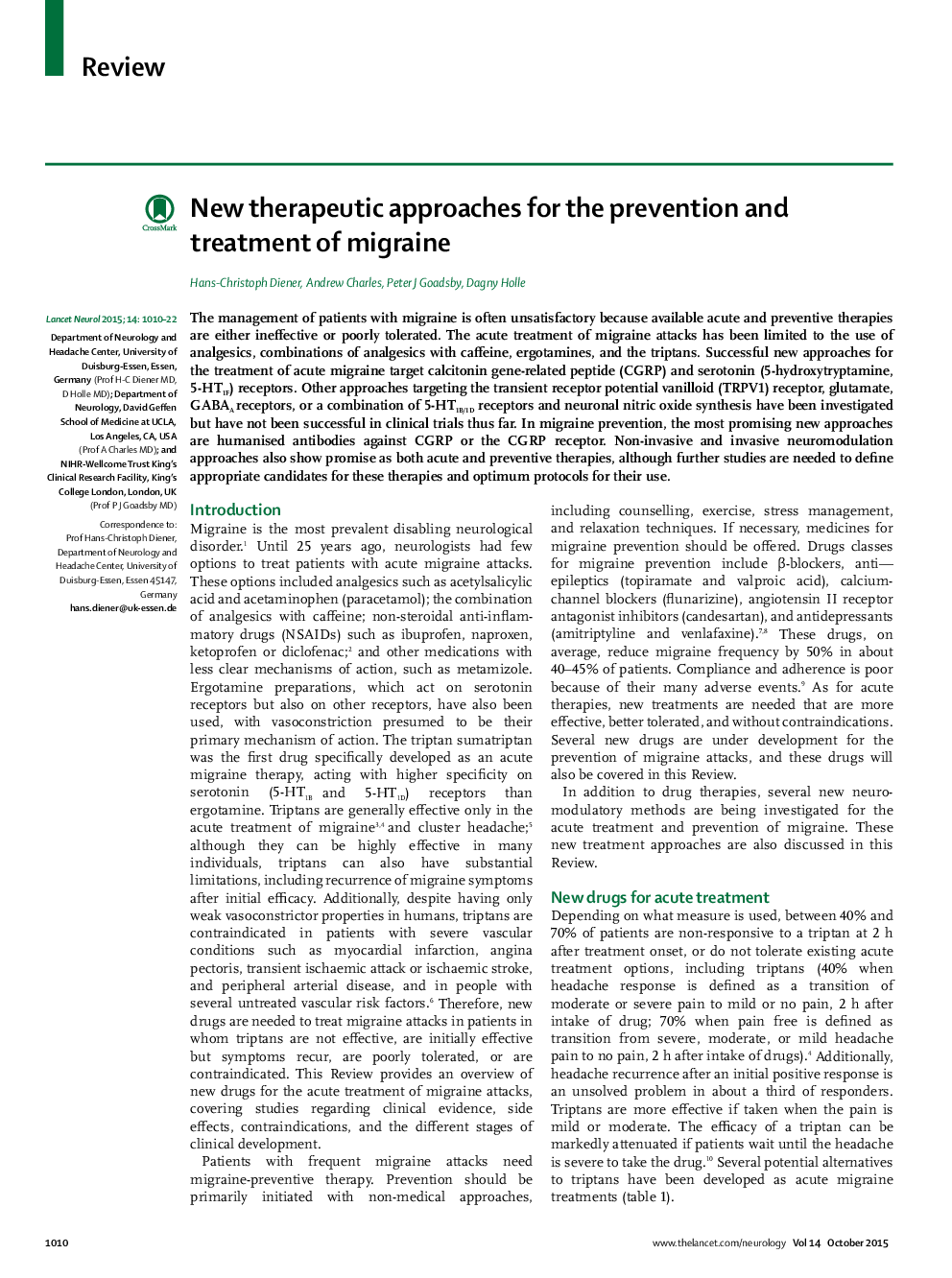| Article ID | Journal | Published Year | Pages | File Type |
|---|---|---|---|---|
| 3066670 | The Lancet Neurology | 2015 | 13 Pages |
SummaryThe management of patients with migraine is often unsatisfactory because available acute and preventive therapies are either ineffective or poorly tolerated. The acute treatment of migraine attacks has been limited to the use of analgesics, combinations of analgesics with caffeine, ergotamines, and the triptans. Successful new approaches for the treatment of acute migraine target calcitonin gene-related peptide (CGRP) and serotonin (5-hydroxytryptamine, 5-HT1F) receptors. Other approaches targeting the transient receptor potential vanilloid (TRPV1) receptor, glutamate, GABAA receptors, or a combination of 5-HT1B/1D receptors and neuronal nitric oxide synthesis have been investigated but have not been successful in clinical trials thus far. In migraine prevention, the most promising new approaches are humanised antibodies against CGRP or the CGRP receptor. Non-invasive and invasive neuromodulation approaches also show promise as both acute and preventive therapies, although further studies are needed to define appropriate candidates for these therapies and optimum protocols for their use.
